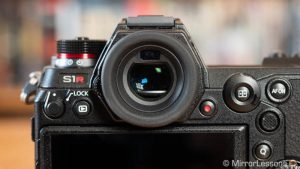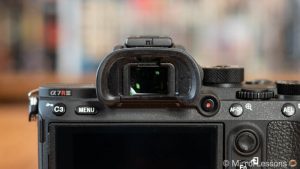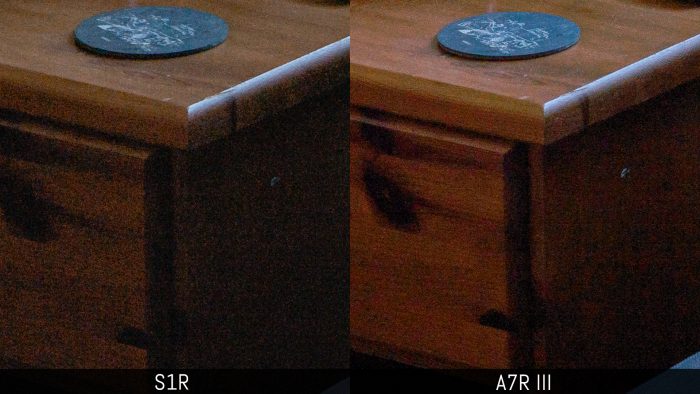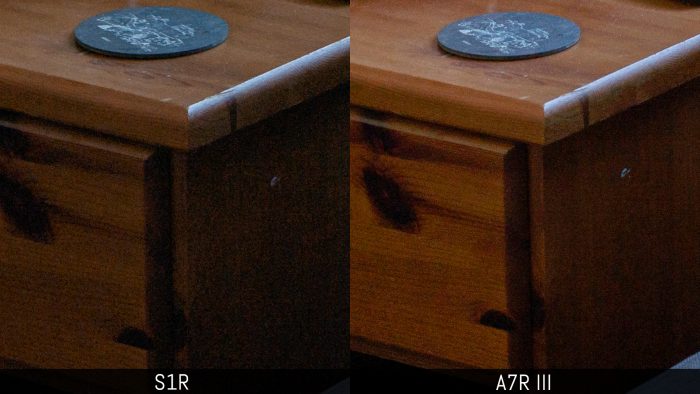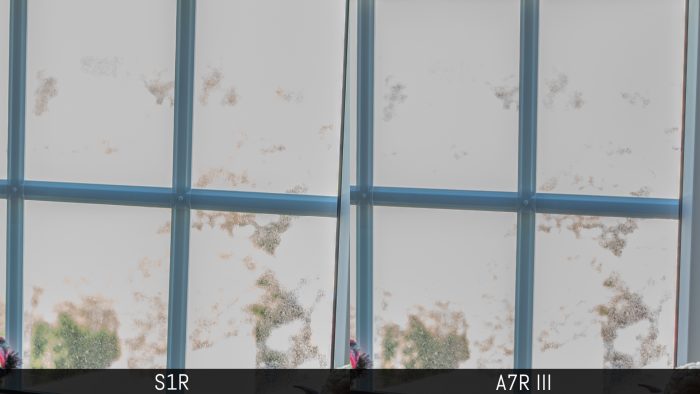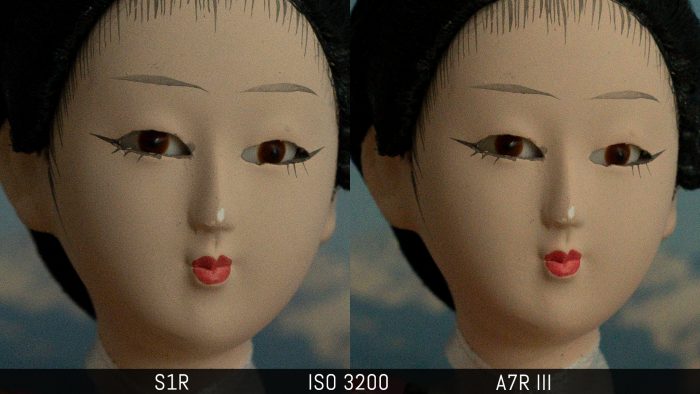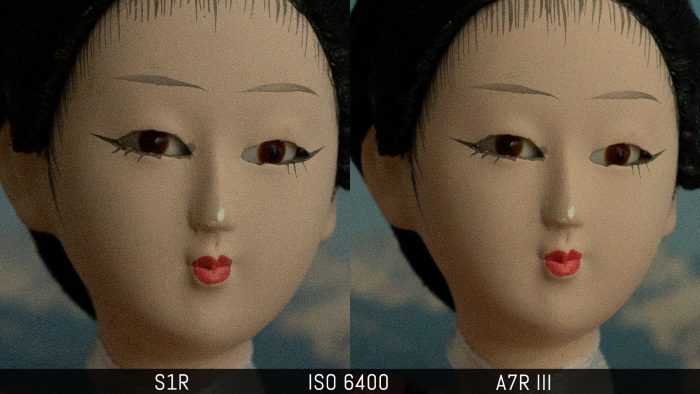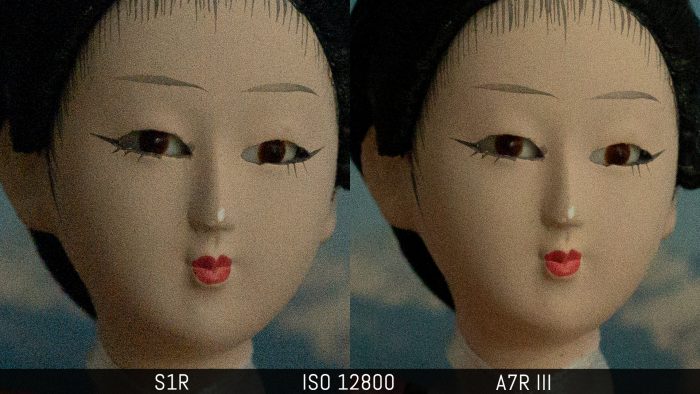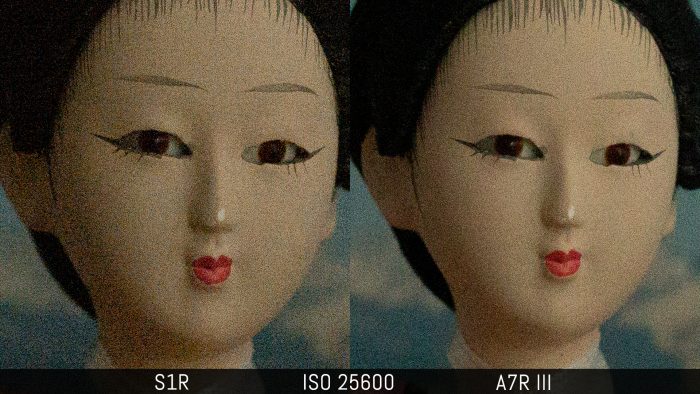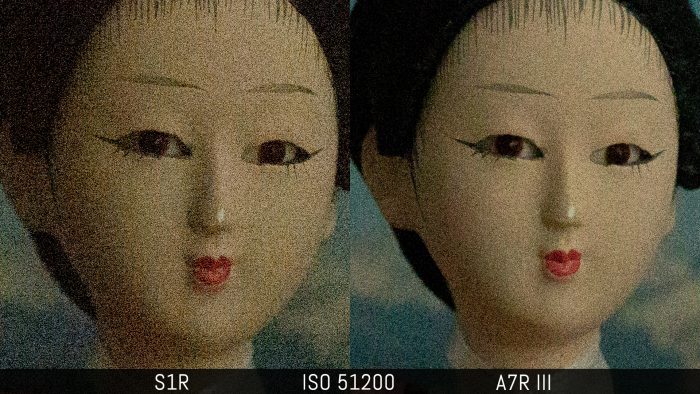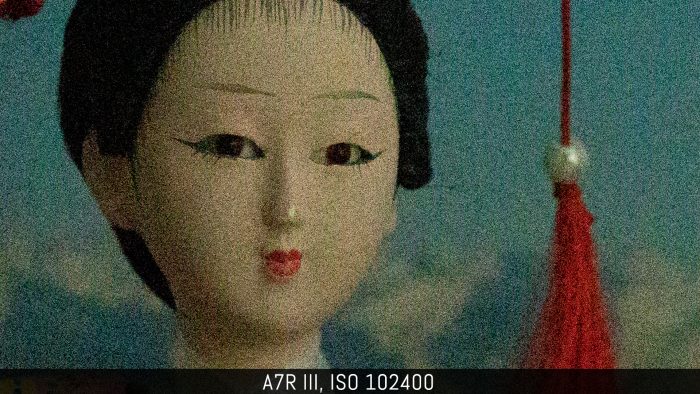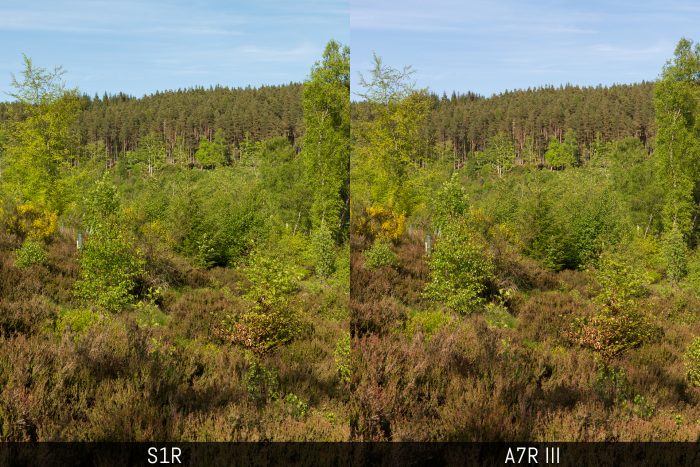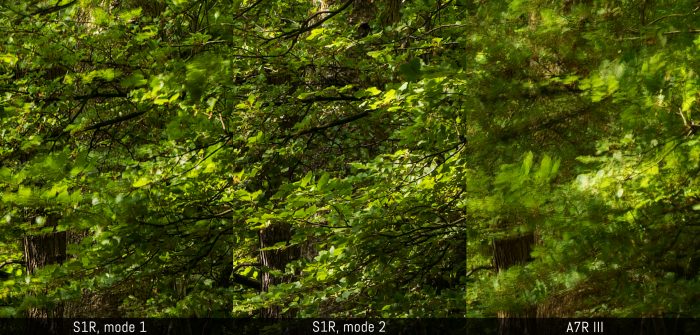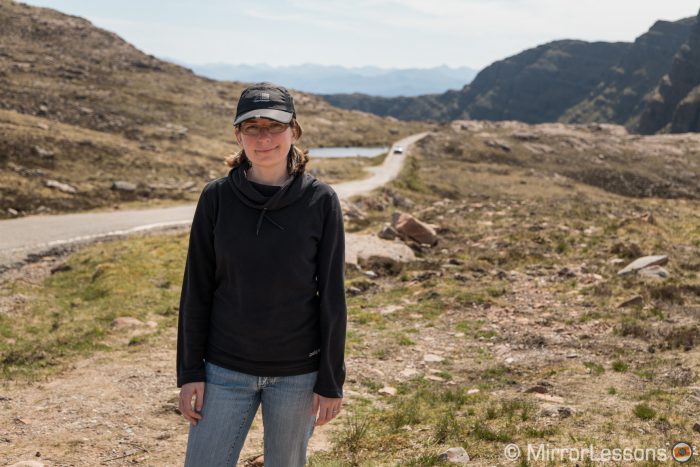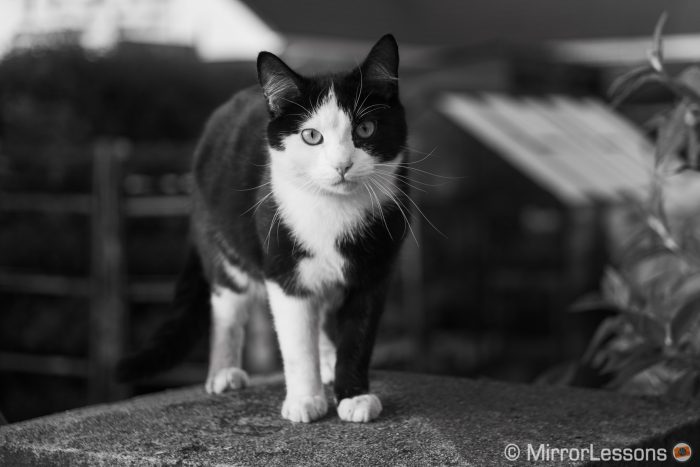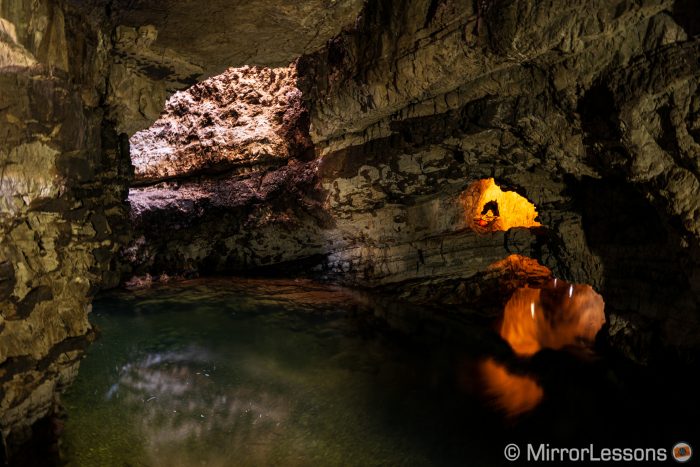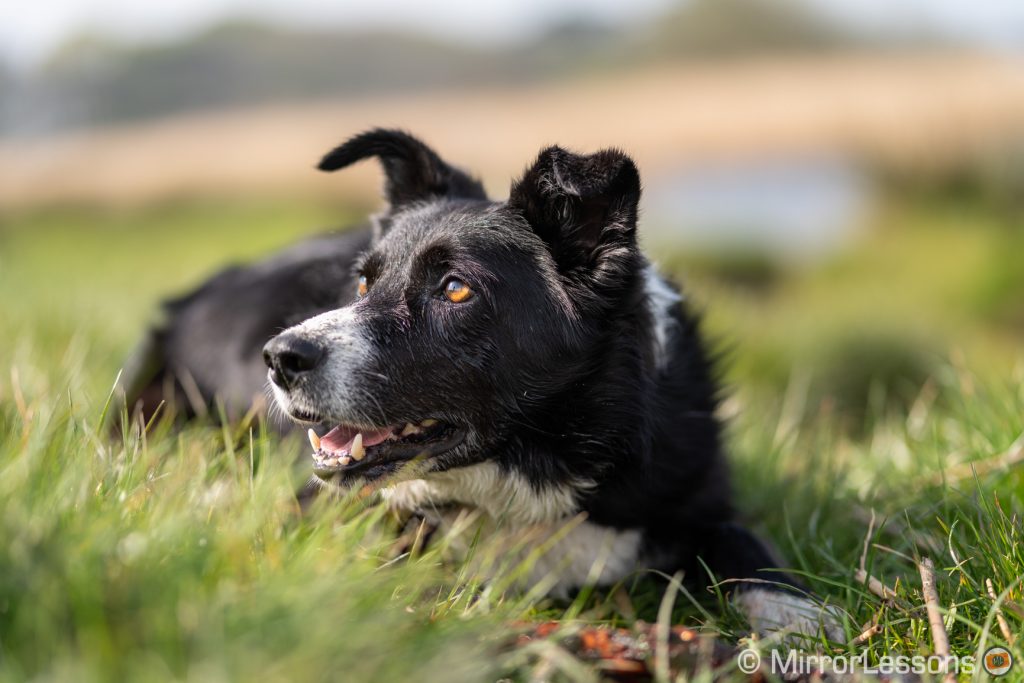After seeing a pre-production version during the launch event in Spain, I was able to get my hands on the Panasonic S1R a second time just before heading off on a trip to Scotland.
Being able to use a brand new camera in an inspiring location like the Scottish Highlands was a great opportunity, but it wasn’t possible to keep it for much longer after my return. Sadly this meant that I didn’t have time to produce a full comparison with another product.
That being said, I still wanted to write about the camera and one of its main competitors, the Sony A7R mark III. So in the little time I had, I took some quick side-by-side shots to show you the basic differences in image quality.
Then I reflected on my experience with the Lumix model and how it compares to the Sony that I own and know very well.
Ethics statement: We purchased the A7R III to conduct our tests whereas the S1R was loaned to us by Panasonic UK. We were not asked to write anything about these products, nor were we provided any other compensation of any kind. Within the article, there are affiliate links. If you buy something after clicking one of these links, we will receive a small commission. To know more about our ethics, you can visit our full disclosure page. Thank you!
Table of Contents
1. Main Specs
2. Design and ease of use
3. Sensor and image quality
4. Experience with the Panasonic S1R
5. Experience with the Sony A7R III
6. Conclusion
Main Specs
S1R
A7R III
- Sensor: 47.3MP 35mm format CMOS
- Lens system: L-mount
- Weatherproof: Yes
- Internal Stabilisation: Yes (5-axis)
- Autofocus: DfD contrast detection with 225 areas
- Continuous shooting: 9fps and 6fps with C-AF
- ISO Sensitivity: 100 – 25600 ISO (pull 50, push up to 51200)
- Shutter Speeds: 1/8000 to 60s, Bulb
- Viewfinder: 0.5in OLED with 5,760k dots, 21mm eye point, 0.78x magnification and 120fps refresh rate
- Rear monitor: 3-way tilting 3.2” LCD (2.10M dots) with touch sensitivity
- Movie recording: 4K up to 60fps, Full HD up to 180fps
- Built-in Flash: No
- Extra Features: WiFi, Bluetooth, High Res mode, 6K/4K Photo, etc.
- Dimensions: 148.9 x 110 x 96.7mm
- Weight: 1,020g (including battery and memory card)
- Firmware version: 1.1
- Sensor: 42.4MP 35mm format BSI Exmor CMOS
- Lens system: E-mount
- Weatherproof: Yes
- Internal Stabilisation: Yes (5-axis)
- Autofocus: Hybrid with 399 phase and 425 contrast detection points
- Continuous shooting: 3fps to 10fps with C-AF
- ISO Sensitivity: 100 – 32000 ISO (pull 50, push up to 102400)
- Shutter Speeds: 1/8000 to 30s, Bulb
- Viewfinder: 0.5in OLED with 3,686k dots, 23mm eye point, 0.78x magnification and 120fps refresh rate
- Rear monitor: Tilting 3″ LCD (1.44M dots) with touch sensitivity
- Movie recording: 4K up to 30fps, Full HD up to 120fps, S-Log and HLG gamma
- Built-in Flash: No
- Extra Features: WiFi, Bluetooth, Pixel Shift Multi Shooting, etc.
- Dimensions: 126.9 x 95.6 x 73.7mm
- Weight: 657g (including battery and memory card)
- Firmware version: 3.00
Design and ease of use
Panasonic and Sony have two completely different approaches to size as you can see by looking at these two products side by side.
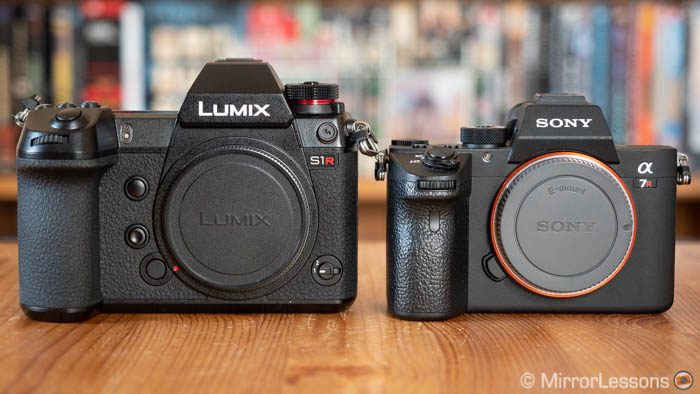
The S1R (and twin sister S1) is the largest full frame mirrorless camera currently on the market, even larger than the Leica SL.
The A7R III design on the other hand has not changed since the release of the A7 II in 2014, minus a few small tweaks here and there. Sony has always prioritised compact bodies with the E-mount series and continues to do so for the time being.
You can easily perceive the larger size of the S1R as well. The Lumix body alone weighs more than a kilo, which is significantly heavier than the Sony model.
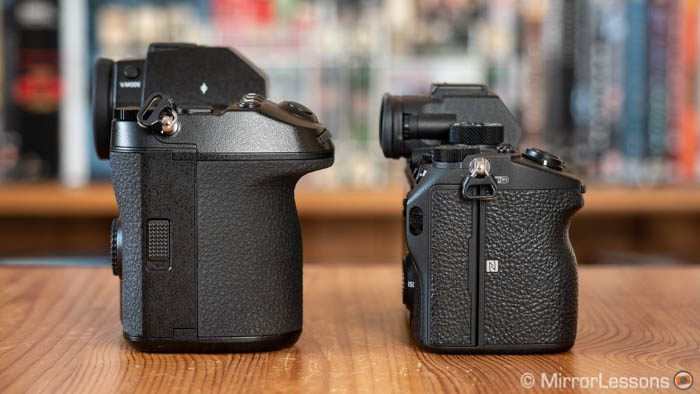
This difference can be considered both a plus and a minus on both fronts. The S1R is well-designed in terms of ergonomics. It is comfortable and secure to hold thanks to the large grip, and the extra surface area around the body has allowed the design team to leave more space between buttons, add more controls and even insert a monochrome screen on top.
The first lenses designed for the system by Panasonic have large dimensions and the first primes converted from Sigma’s Art series won’t be small either. So really the size and weight of the S system is the only factor that can be seen as negative, although for some it might actually be a positive aspect.
If you like to keep your gear portable, Sony gives you something that the S1R can’t at the moment. In addition to the smaller body, you can find native compact prime lenses (and even a few zooms). The grip on the A7R III is far from perfect however and with certain lenses, a grip extender or battery grip become must-have accessories.
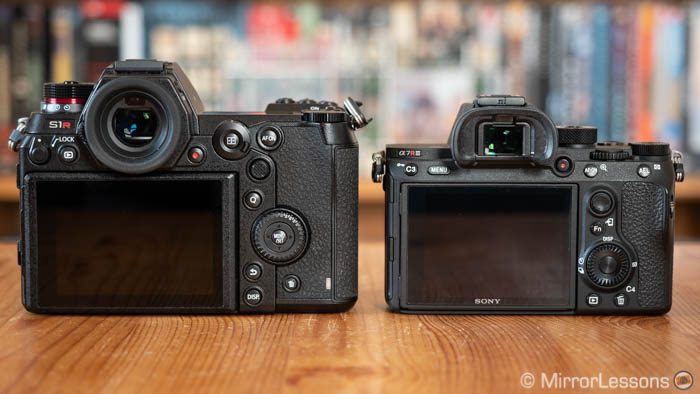
The S1R is more straightforward to use, not only thanks to the vast array of buttons and dials that are for the most part well placed, but also thanks to an intuitive menu system and vast customisation possibilities. Some of the buttons on the rear are retro-illuminated which is another feature you won’t find on the E-mount camera.
The A7R III set of buttons and dials is sufficient but the main menu is more confusing. Thankfully the camera offers a good level of personalisation (custom buttons and Fn menu) to overcome some of that. The learning curve is certainly bigger on the Sony but you eventually overcome it.
One of the best things about the S1R is the viewfinder. It is large, has a whopping resolution of 5,760k dots and the refresh rate can go as high as 120fps. The lag is minimal (5ms) and the cherry on top is the possibility to vary the magnification (0.78x, 0.74x and 0.7x) which is useful for someone like me who wears glasses. It is the best I’ve used to date.
The A7R III EVF is excellent with a resolution of 3,686k dots and a refresh rate that goes up to 120fps too. When the camera came out, it was one of the best on the market. Now it is starting to feel a bit dated mainly because Panasonic has raised the bar so high, but this is only natural in a dynamic camera market.
The S1R rear monitor can be tilted on 3 axes (up, down and right side) whereas the one on the Sony moves in two directions only (up and down). The touch screen interface is much more complete on the Lumix: everything you do with the buttons can be done on the touch screen too, including navigating the menu and creating custom AF groups. On the A7R III, the touch screen is used to move the single AF point or to swipe through the images in playback mode.
Other things worth pointing out are:
- both cameras are weather sealed (the S1R is also freeze proof down to -10ºC)
- both offer two memory card slots; the S1R uses one SD (UHS-II) and one XQD card, whereas the A7R III takes two SD (UHS-II on slot nb.1)
- both have a mic input and headphone output, a USB C port (compatible with power delivery), a flash sync socket and an HDMI output (full sized on the Lumix)
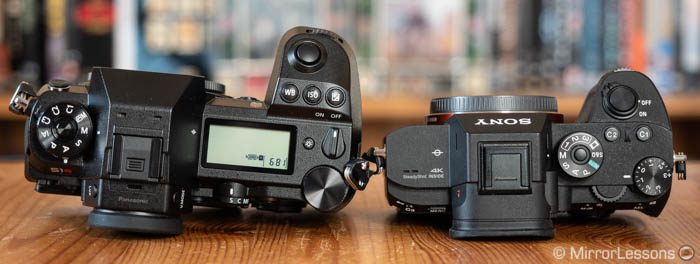
Both cameras house a capable battery but the Sony’s lasts longer and remains the benchmark in the category. I only had one unit for the S1R during my Scotland trip so I made sure to turn off the camera between shots. The performance wasn’t bad and it certainly lasted for a day when shooting landscapes. But overall the remaining power drops faster than on the Sony. It also decreases more rapidly with the EVF high frame rate, continuous AF, burst shooting and of course when shooting video.
Sensor and image quality
The two cameras use a 35mm format sensor with a similar resolution: the S1R has 47.3MP whereas the A7R III uses 42.4MP. The Sony uses a BSI (Back-illuminated) structure and both sensors lack the anti-aliasing filter.
As mentioned in the introduction, I didn’t have time to put these two beasts through an in-depth test, but I did some quick comparisons to have a better idea of how they compare side by side.
The A7r III has an advantage in terms of dynamic range when recovering a heavily underexposed image. I can pull extra colour information from the Sony RAW files whereas the shadows remain darker and display more noise on the Panasonic version.
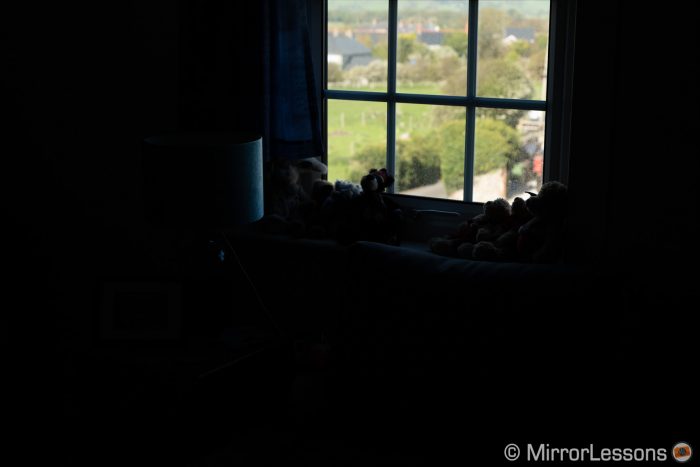
With less exposure recovery, the result is much cleaner on both cameras but once again the Sony manages to retain more brightness.
For highlight recovery, the Panasonic retains a bit more information in the bright areas but the difference is really subtle.
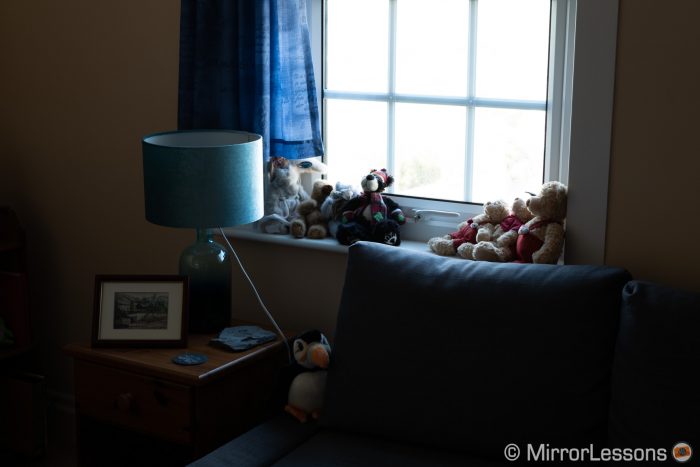
The S1R has a normal sensitivity range of 100 to 25600 ISO. Extended values go down to 50 and up to 51200 ISO. The A7R III also starts from ISO 100 but goes a bit further up to ISO 32000, with extended values reaching 102400 ISO.
The noise levels are pretty much the same up to ISO 3200. From 6400 we start to notice a bit of difference but it is from 12800 that the advantage of the A7R III becomes more significant.
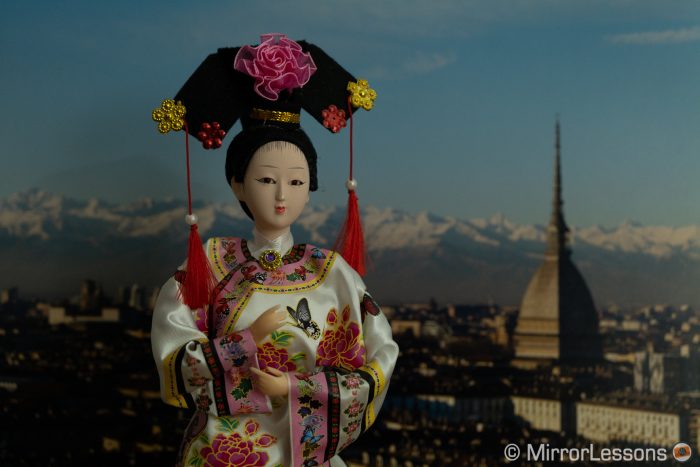
The Sony maintains low noise at the highest values except the final one where the image becomes unusable. The Panasonic suffers more at 25600 and 51200 ISO.
Each camera has a distinctive set of picture profiles but I only managed to take one example with the RAW files, where colours can be influenced by the software used. Lightroom Classic is my usual workflow and what I noticed overall with the S1R is a tendency towards green, whereas the A7R III is more prone to reddish tints. Of course this difference is subtle and both files are very flexible in post production.
Both cameras have sensor shift technology that can be used for image stabilisation as well as another feature called High Resolution shot (named Pixel Shift Multi Shooting on the A7R III).
The principle works in the same way: the cameras take multiple frames and move the sensor by one pixel between each shot.
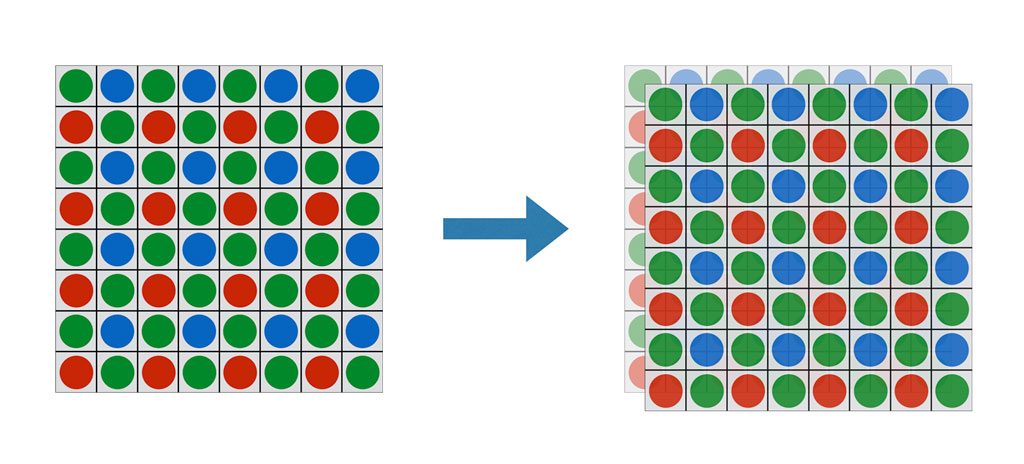
The S1R takes 8 pictures in total and combines them in camera, creating an output of 186MP with more colour information (each point in the image is captured by at least one red, blue and green pixel).
The A7R III mode is less advanced: it takes four pictures and can’t combine them in camera. You need to composite them with the Sony Imaging Edge software and only colour resolution increases. The image size remains the same as the native sensor pixel count (42.4MP).
Another advantage of the S1R with this mode is how it deals with moving elements. Usually this type of setup requires a tripod and static objects in the scene to avoid artefacts. While the former still applies, the S1R can get rid of the artefacts by replacing a portion of the high res image with a low resolution version (single frame) if you choose Mode 2 in the settings.
As you can see below, it works really well. This kind of solution is not uncommon but the S1R version is the best I’ve tested so far by a long shot.
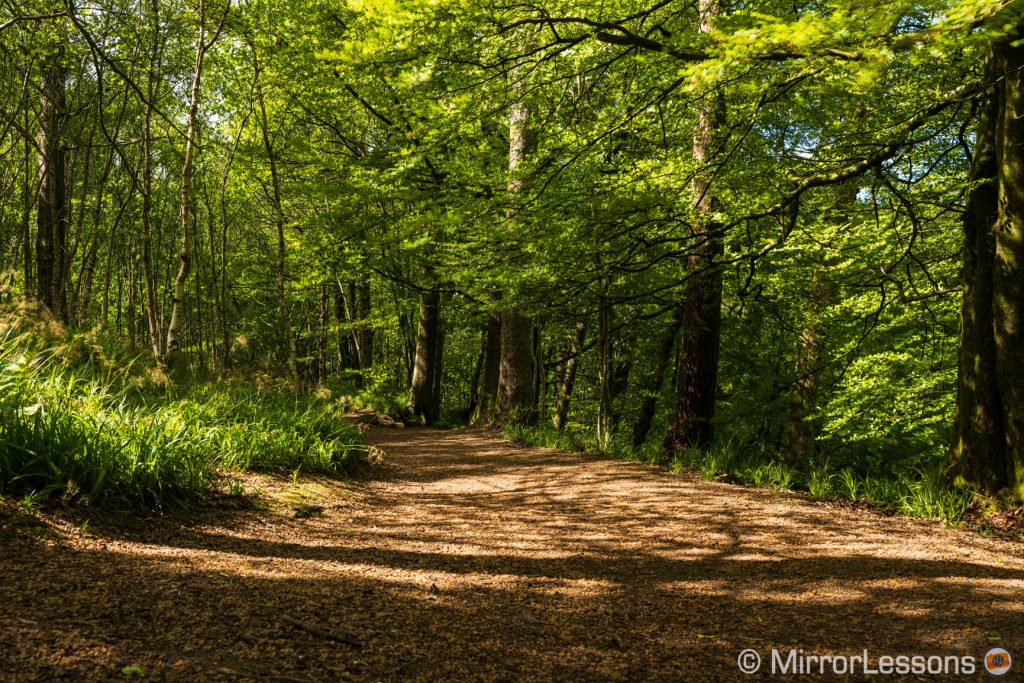
Experience with the Panasonic S1R
My two weeks with the S1R proved that the camera has lots of potential as a landscape / fine-art / still life photography workhorse. The image quality, the fine colour reproduction and the high resolution mode make it one of the best choices at the moment, as long as you mount a worthy lens in front of it. But what about the rest?
The S1R uses Panasonic’s DfD (Depth from Defocus) autofocus, an advanced contrast detection system introduced with the Lumix GH4 in 2014. Many improvements have been made to this technology, particularly with the arrival of the GH5 and G9, and now it debuts for the first time on a full frame camera.
The S1R performance felt very familiar to that of the most recent Lumix micro four thirds cameras. Focus acquisition is fast, and there are many focus area (225) and group area options to choose from (including customisable ones). There is also the possibility to fine tune speed and reactivity in continuous mode.
Unfortunately, much like the G series, the DfD can’t always be trusted 100%. I only had the 24-105mm f4 lens with me so I couldn’t test the camera in all sorts of conditions, but as soon as more complicated subjects appeared, like a close-flying bird, the S1R struggled greatly.
The software is impressive: it can recognise faces, eyes, human bodies and animal bodies, even when there are multiple subjects in the frame, but focus accuracy doesn’t alway follow through. For example, in the case of the picture of Heather below, I had to take more than one shot to make sure I had one in focus. The light conditions (lots of contrast) seem to have confused the camera more than expected.
Animal detection works well but can mis-focus easily if the animal is close or moves constantly. Perhaps future firmware updates will improve the performance – after all, it is a first for a Panasonic product!
If the autofocus didn’t impress me, the image stabilisation on the other hand did. The S1R has 5-axis IBIS and can combine sensor with optical stabilisation of select lenses (Dual IS), which brings the compensation rating up to 6Ev (CIPA).
I was able to push the performance down to around 1 second quite easily, and with a bit of patience I got sharp results at 2s and even 4s. I’d never come close to these kinds of shutter speeds before with a full frame camera, and it is far superior to any Sony camera at the moment.
Furthermore, Panasonic added a useful tool called I.S. Status Scope: it displays a graphic to show you how much the camera is shaking, giving you a reference point to help you control it the best you can. It is very useful.
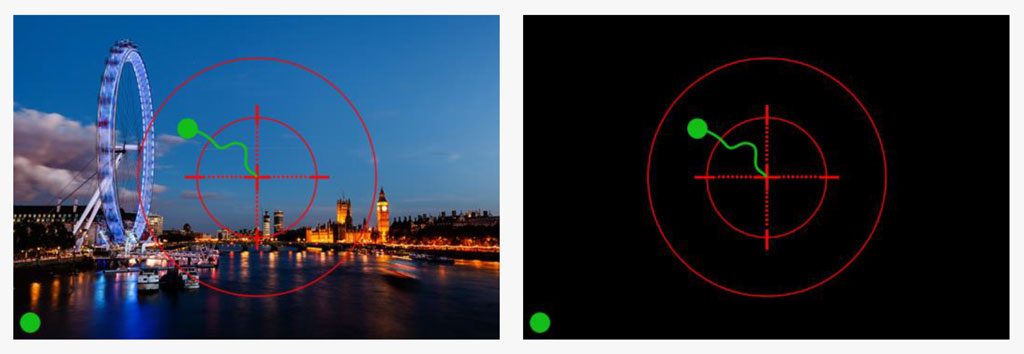
I didn’t dig into the video capabilities too much mainly due to lack of time, so my impressions remains similar to the hands-on at the press event.
The camera has a good set of recording specs, although none of them are game changing. It can record up to 60p and 150Mbps in 4K. There are three crop modes: full frame (1.1x crop), APS-C (1.5x) and Pixel to Pixel (2x crop). Note that 50/60p only works with an APS-C crop. Recording is 8-bit 4:2:0 internally, or 8-bit 4:2:2 via HDMI output. In Full HD, it can go up too 180fps. The recording limit is 15 minutes in 50/60p and 30 minutes in 4K/30p.
The quality in 4K is excellent overall when working in good light conditions. Noise increases at high ISOs and surprisingly there doesn’t seem to be a big difference between the three crop modes. Overall though, I can’t help but think that there are better options out there if video is one of your main priorities, and I include the A7R III on that list (see next chapter).
Among other things to point out, there is a bit of shutter shock at around 1/50s. I first got a glimpse of this while trying the pre-production model, and I can now confirm it. The best solution is to assign the front function lever to the electronic first curtain mode so you can switch to it at any time.
The S1R is not a sports camera by any means but it can do a more than decent 9fps, or 6fps with continuous AF and live view. Buffer memory is not the best however, especially if you shoot RAW.
Like many Panasonic cameras, the S1R is packed with tons of extra features including 4K and 6K Photo, Time-lapse and Stop-Motion, Focus Bracketing, Wifi, Bluetooth, Tethering and many other things.
Experience with the Sony A7R III
The main strength of the Sony A7R mark III is that, in addition to housing one of the best sensors on the market, it can do very well for all kinds of genres. It’s a jack of all trades and master of many.
For example the autofocus system feels a bit slower in S-AF mode in comparison to the S1R, but the 399 phase detection points deliver better and more consistent results in C-AF. The camera performed well in my sports and wildlife tests.
The S1R has a more advanced subject recognition software (eyes, faces, bodies, animals) but the Sony EyeAF is far more efficient in terms of focus accuracy. The eye is what you want in focus more than anything else when photographing a person or an animal up close, and the A7R III handles this much better. The recent EyeAF for Animals introduced via firmware is already more effective despite being a first generation.
Another advantage of the A7R III is the continuous shooting speeds, which go up to 10fps with AE/AF Tracking. You can choose a compressed option for the RAW files to increase the buffer, so the camera is a more compelling option for action, sports and wildlife.
Sony full frame E-mount cameras have been popular from the start because they offer the possibility of adapting a vast number of third party lenses. The A7R II opened phase detection compatibility to DSLR lenses and third party adapters, increasing the selection of products available and making it easier for photographers switching from another system (Canon in particular).
I believe that the choice to employ a contrast detection system on the S1R is going to limit such possibilities. The first official adapter for the S1R, the Sigma MC-21 which is designed to work with SA and EF lenses, only operates in Single AF mode for now. Sigma offers the same kind of adapter for E-mount with full C-AF performance. Hopefully future firmware updates will make the MC-21 more appealing but I doubt it will reach the same performance as with the A7R III.
On the video side, the A7R III can record up 30fps in 4K, and up to 120fps in Full HD. Compression is 8-bit 4:2:0 internally and 8-bit 4:2:2 via HDMI just like the S1R. It doesn’t reach the same frame rate capabilities as the S1R, but has more settings for video makers including two Log profiles and many customisable Picture Profiles.
The quality in full frame mode is very good, but you get the best possible output by recording in Super35 mode (APS-C) where full pixel readout is applied and the performance in terms of sharpness and high ISO is not far from cameras such as the A7 III.
The only area where the A7R III doesn’t excel is image stabilisation. It’s not bad by any means but you have to be careful at around 1/2 or 1/4s as the images often display motion blur. Sensor and optical stabilisation can be combined but the system is not nearly as advanced as Panasonic’s Dual IS, and that includes video as well where a lot of jittering remains.
The Sony doesn’t have the same array of extra features and advanced options as the S1R. You’ll find bracketing options as well as an intervalometer that was recently added via firmware update.
Conclusion
In terms of image quality, both products are very capable of delivering some of the finest photographs a camera can take.
The A7R III gives you a bit more dynamic range and better high ISO performance. If we factor in its superior autofocus, continuous shooting, video performance, as well as the lower price, it becomes difficult not to recommend.
The S1R already feels like a mature product in terms of design and features, but I’m not sure that the DfD AF system can take on difficult subjects as well as the A7R III and its phase detection AF system.
The S system needs time to grow. There is much less choice in terms of lenses, which is only natural for a system that was announced six months ago.
Sigma will play a crucial role in enlarging the lens catalogue, although it is likely that the company will offer the same products for both mounts. This means that the advantage of the S1R and the L alliance might be reduced to the possibility of attaching expensive Leica L lenses.
The Lumix model does have a few tricks up its sleeve however. The image stabilisation system is superior and the high res mode is much more usable in various conditions. But to me it remains a niche product for the time being.
Reminder: the links below are affiliate links. If you decided to buy something after clicking the link, we will receive a small commission.
Check the price of the Panasonic S1R on:
Check the price of the Sony A7R III on:
Amazon | Amazon UK | B&H Photo | eBay
Second-hand Panasonic gear on:
Second-hand Sony gear on:

